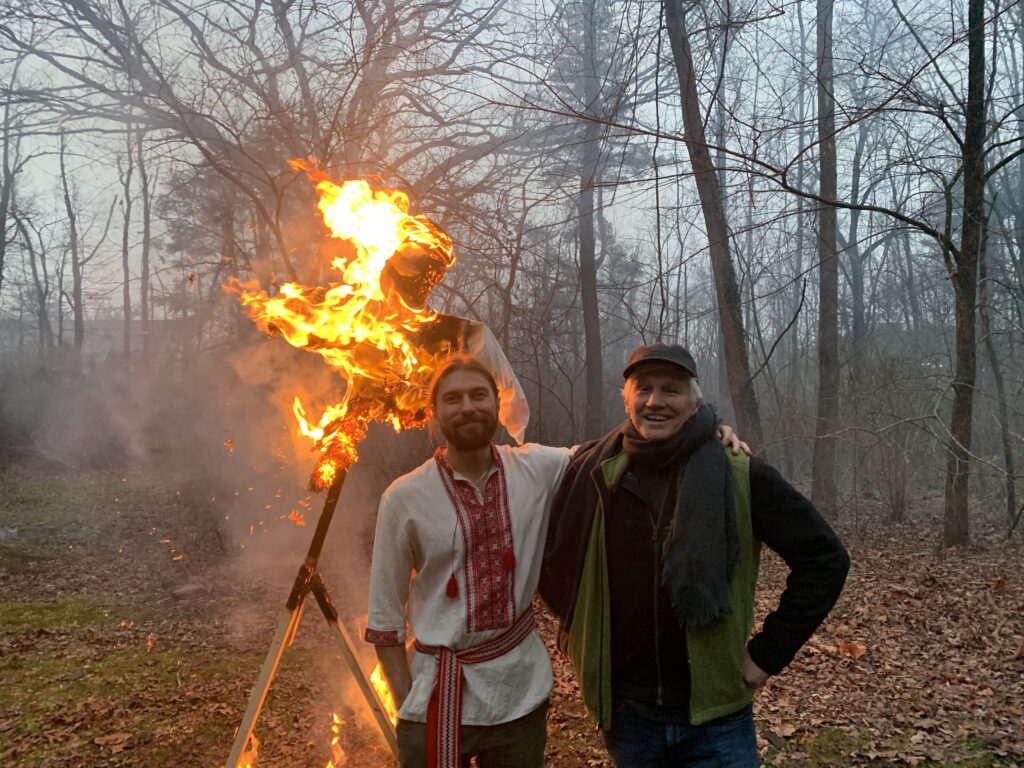Using the Language Resource Center to Build Community on the Language Learning Journey
By Helen Stapleton, Sewanee: University of the South

DOI: https://www.doi.org/10.69732/RYTD7746
No matter which language we are learning, we are all on the same journey towards proficiency and familiarity with the culture. At Sewanee, a small liberal arts college of roughly 1750 students in the mountains of rural Tennessee, the E.L. Kellermann Language Resource Center strives to build community among learners of all the languages we teach: Chinese, French, German, Italian, Russian, and Spanish. Sewanee has a long tradition of language theme houses where students studying a particular language live along with a native speaker of the target language, and events for particular languages are often held in their respective language houses. Additionally, the Language Resource Center offers language tutoring in all the languages and organizes events involving all of the languages. In this article, I will outline some of the language learning community building activities provided by the Language Resource Center.
Every fall for the past 7 years, we have held an International Karaoke Night featuring prizes, food, and fun. It is always a highlight of the fall semester! Sometimes the language professors get their whole classes involved, but most students enter individually or in small groups, typically receiving extra credit for participating. The technology involved is simple: a microphone, an amp/speaker, a projector, and a laptop. We typically allow a maximum of 30 songs and students need to sign up 5 days beforehand, so that we can have the songs cued up on the laptop and students have time to practice their songs. Most students find their songs on YouTube, others we purchase from Karaoke sites such as “Karaoke Version.” Prizes typically include candy and gift certificates to area businesses. This event is a great opportunity for students of Spanish to hear students of Russian or Chinese singing and going through the same struggles on the same long journey. They are also exposed to elements of different cultures expressed through the songs. Many students have come to me years later saying that they still remember every word to their karaoke song.

In the spring semester, the Language Resource Center organizes and funds a Carnival Tour of the Language Houses. The Francophone world has Mardi Gras; Germany has Fasching; Italy has Carnevale; Russia has Maslenitsa, and the Hispanic world celebrates Carnaval. Each language theme house has food and activities particular to their region and students walk from house to house experiencing this international holiday as it is celebrated around the world. When students see costumes at each house and round cakes or pancakes at several of the houses, they gain firsthand experience of the common origins of this holiday in different cultures from their pre-Christian pasts.


Throughout the year, the Language Resource Center hosts Foreign Language Yoga every Friday afternoon. We cycle through all of the languages taught at The University of the South. On one Friday, we host Chinese yoga at 4:00 followed by French at 5:00; on the following Friday, we do German and Italian, and then Russian and Spanish. Students can end their stressful week effortlessly absorbing the language as they follow along to a YouTube yoga video conducted in their target language. We move the tables out of the way to make room and roll out our set of yoga mats. Some language professors offer their students extra credit for attending Foreign Language yoga. This is a great way to lower the affective filter!

One end-of-the-year outreach for all of the languages is a “Can Do” display in the atrium of Gailor Hall, where all of our language classes take place. To help students reflect on what they have learned to do in the target language over the year, we post a list of communicative tasks. Tasks range from introducing yourself, counting to 100, or ordering at a restaurant, to higher order tasks like talking about what you would do if you were president (conditional tense) or giving advice to a friend who wants to be healthier (subjunctive). Students add their initials next to the tasks that they are able to do in their target language(s). They can compare themselves to other students taking their own language and those learning other languages, and it allows students to see their own progress in a very tangible way. Ultimately, we learn a language to communicate and not to conjugate a verb correctly or fill in a blank.

As many institutions are losing their language resource centers and even their language programs, Sewanee has kept its Language Resource Center to serve as a headquarters for language acquisition in the digital world and in the real world, and to bring together all of the language departments into one community. Language Resource Centers must do more than just offer technology. Connections created through music, food, games, and movement help the language stick more than any app or website. Most importantly, the Language Resource Center fosters human to human connections that result in a successful language learning community.


Great ideas!
Great ideas, Helen! Thank you!
So many fun ideas! Thanks for sharing, Helen!